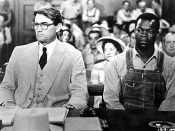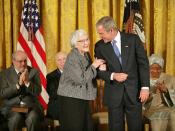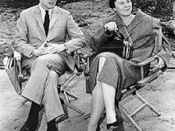The plague of racial hatred. In To Kill a Mockingbird, a small southern town ravaged by the Depression is unknowingly diagnosed with this even more devastating disease. One lone soul is prepared to make the diagnosis. An adaptation based on the classic Pulitzer-Prize-winning novel by Harper Lee, "To Kill A Mockingbird" is a legendary movie, uniquely strong and sensitive about racism and the ways of the Old South during the Depression in the 1930s. It is accurately portrayed and still remains one of the most powerful arguments against racism ever revealed on screen. The film however, does not only focus on the issue of racism, yet it also deals with courage, innocence, childhood, education, prejudice and the lessons that we learn in life.
Several kinds of courage can be recognised in this film. There is the basic courage required to overcome childish fears, such as running past the Radley place, or returning there to fetch the trousers that Jem caught on the fence.
Atticus also shows a form of childish courage when he shoots down the mad dog, even considering that he has a gun with him. A moral form of courage is shown by Scout, when she is asked by her father not to retaliate when children tease and torment her and himself. The most evident and difficult courage is shown by Atticus when he is certain to lose but still chooses to defend Tom Robinson, due to his great integrity. Though Atticus is pressured and harassed on all fronts and loses friends over the incident he gains the respect of his children and the black population of their 'dirty' town. The weakest person, in the sense of courage is Bob Ewell as he seeks to take revenge on Atticus' children but faces them in darkness rather than...


